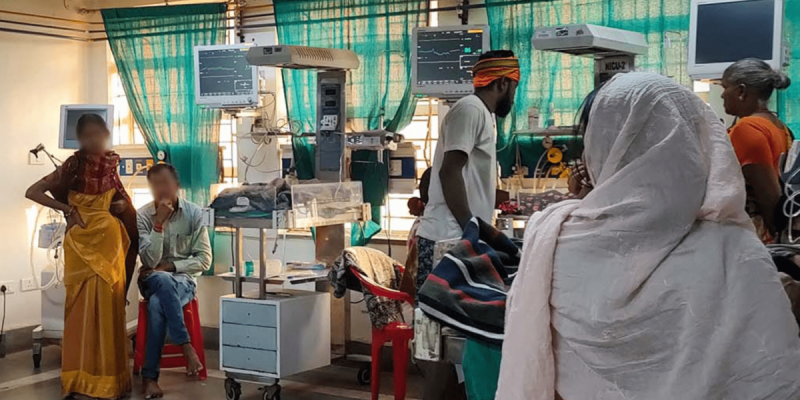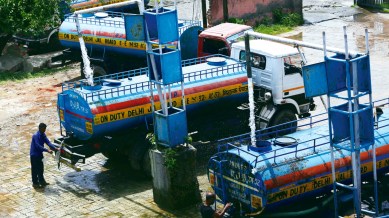- Courses
- GS Full Course 1 Year
- GS Full Course 2 Year
- GS Full Course 3 Year
- GS Full Course Till Selection
- MEP (Mains Enrichment Programme) Data, Facts
- Essay Target – 150+ Marks
- Online Program
- GS Recorded Course
- NCERT- First Ladder
- Polity
- Geography
- Economy
- Ancient, Medieval and Art & Culture AMAC
- Modern India, Post Independence & World History
- Environment
- Governance
- Science & Technology
- International Relations and Internal Security
- Disaster Management
- Ethics
- Current Affairs
- Indian Society and Social Issue
- CSAT
- 5 LAYERED ARJUNA Mentorship
- Public Administration Optional
- ABOUT US
- OUR TOPPERS
- TEST SERIES
- FREE STUDY MATERIAL
- VIDEOS
- CONTACT US
Kargil Vijay Diwas 2024
Kargil Vijay Diwas 2024
|
Kargil Vijay Diwas 2024 |
|
|
Kargil Vijay Diwas Date |
26 July |
|
Kargil Vijay Diwas 2024 |
25th anniversary of India’s victory in the Kargil War |
|
Kargil War Duration |
3 May – 26 July 1999 (2 months, 3 weeks and 2 days) |
|
Operation Name |
Operation Vijay |
|
Key Locations |
Drass, Kargil, Batalik, Tiger Hill |
|
Result |
Indian victory India regains possession of Kargil |
|
Indian Casualties |
527 martyrs, 1,363 wounded, and 1 PoW (Fl Lt K Nachiketa) |
|
Events |
Events to commemorate 25 years of Kargil Vijay Diwas include memorial services, Bike Rally at Kargil, ‘Kargil Vijay Diwas Rajat Jayanti’ by the Indian Air Force |
|
Kargil Heros |
Sqn Ldr R Pundir, Flt Lt S Muhilan, Captain Vikram Batra, Lt Manoj Kumar Pandey, among others. |
Kargil Vijay Diwas 2024 is set to be observed on Friday, July 26, 2024. This date marks the 25th anniversary of India's victory in the Kargil War of 1999.
- The day is of immense significance in Indian history, serving as a tribute to the valor and sacrifice of Indian soldiers who fought in this conflict.
2024 Celebrations and ObservancesFor the 25th anniversary in 2024:
|
Historical Context
- The roots of the conflict can be traced back to the India-Pakistan War of 1971, which resulted in the creation of Bangladesh (formerly East Pakistan).
- Following this, India and Pakistan continued to have territorial disputes, particularly over the Siachen Glacier. Both countries established military outposts in the surrounding mountain ranges, leading to ongoing tensions.
- The situation escalated further when both nations conducted nuclear tests in 1998, heightening the animosity between them.
In an attempt to ease tensions and promote peace:
- India and Pakistan signed the Lahore Declaration in February 1999.
- This bilateral agreement was intended to resolve the Kashmir issue peacefully and reduce overall tensions between the two nations.
- However, despite this diplomatic effort, the peace was short-lived.
The Kargil War (1999)
The war unfolded as follows:
- In May 1999, it was discovered that Pakistani soldiers and militants had infiltrated Indian territory in the Kargil district of Jammu and Kashmir.
- These infiltrators occupied strategic high-altitude positions, aiming to:
- Sever the link between Kashmir and Ladakh
- Force Indian troops to withdraw from the Siachen Glacier
- Bring the Kashmir issue into international focus
- In response, India launched Operation Vijay to reclaim the occupied territories.
- The conflict lasted from May to July 1999, with intense battles fought in challenging mountainous terrain.
- Key achievements of the Indian Army included recapturing Tiger Hill and other strategic positions.
- The war concluded on July 26, 1999, with India successfully driving out the Pakistani intruders.
- However, the victory came at a significant cost, with India losing nearly 490 officers, soldiers, and jawans.
Operation Vijay: India's Military Response
Objectives
- Reclaim all positions occupied by Pakistani forces
- Restore the sanctity of the Line of Control
- Prevent further infiltration attempts
Key Military Actions
- Extensive use of artillery and air power to support ground troops
- Capture of strategic points like Tiger Hill and Point 4875
- Coordination between Army, Air Force, and Navy for a multi-pronged approach
Heroes of the Kargil War
Captain Vikram Batra (13 JAK Rifles)
- Known for the war cry "Yeh Dil Maange More!"
- Led the capture of Point 4875 (now Batra Top)
- Posthumously awarded the Param Vir Chakra, India's highest military decoration
Lieutenant Manoj Kumar Pandey (1/11 Gorkha Rifles)
- Led attacks on multiple enemy positions
- Played a crucial role in the capture of Khalubar hills
- Posthumously awarded the Param Vir Chakra for exceptional courage
Grenadier Yogendra Singh Yadav (18 Grenadiers)
- At 19, became the youngest Param Vir Chakra recipient
- Crucial in the capture of Tiger Hill despite severe injuries
- Continued fighting after being hit by multiple bullets
Rifleman Sanjay Kumar (13 JAK Rifles)
- Displayed extraordinary courage at Point 4875
- Single-handedly took on enemy bunkers
- Awarded the Param Vir Chakra for his actions
Major Rajesh Adhikari (18 Grenadiers)
- Led the capture of Tololing complex
- Continued mission despite being critically wounded
- Awarded the Maha Vir Chakra posthumously
National Remembrance and Commemoration
National War Memorial
- Inauguration: 2019
- Location: Near India Gate, New Delhi
- Structure: Four concentric circles - Amar Chakra, Veerta Chakra, Tyag Chakra, and Rakshak Chakra
- Purpose: Honors soldiers who died in various conflicts post-independence, including the Kargil War
- Significance: Serves as a national site for remembrance and reflection
Significance of Kargil Vijay Diwas
- Honoring Sacrifice: It pays tribute to the brave soldiers who laid down their lives for the nation.
- Celebrating Victory: It commemorates India's triumph over adversity and external aggression.
- National Unity: The day serves as a powerful symbol of national unity, reminding citizens of how the country came together during the war.
- Patriotism: It promotes a sense of patriotism and pride in the country's armed forces.
- Inspiration: The stories of bravery from the war inspire future generations, instilling a sense of duty and dedication to the nation.
- Historical Remembrance: It ensures that the sacrifices made during the Kargil War are not forgotten.
Conclusion
Kargil Vijay Diwas 2024 marks a quarter-century since the Kargil War, a conflict that tested India's military might and national resolve. The day serves not only as a tribute to the fallen and a celebration of victory but also as a reminder of the ongoing commitment to national security and the valor of India's armed forces. As the nation observes this significant anniversary, it reflects on the lessons learned, honors its heroes, and reaffirms its dedication to peace while standing ready to defend its borders.
Must Check: Best IAS Coaching In Delhi
UPSC Prelims Result 2024 Out: Expected Cut Off & Other Details, UPSC Prelims 2024 Answer with Explanation, Daily Prelims Quiz, Daily Current Affairs, MONTHLY CURRENT AFFAIRS TOTAL (CAT) MAGAZINE, Best IAS Coaching Institute in Karol Bagh, Best IAS Coaching Institute in Delhi, Daily Mains Question Answer Practice, ENSURE IAS UPSC Toppers, UPSC Toppers Marksheet, Previous Year Interview Questions, UPSC Syllabus




